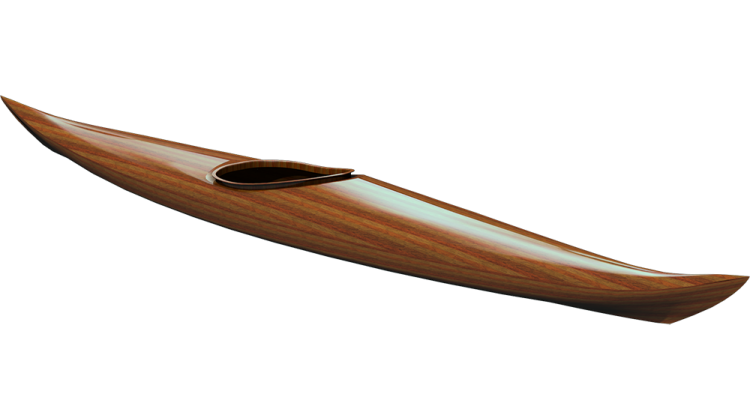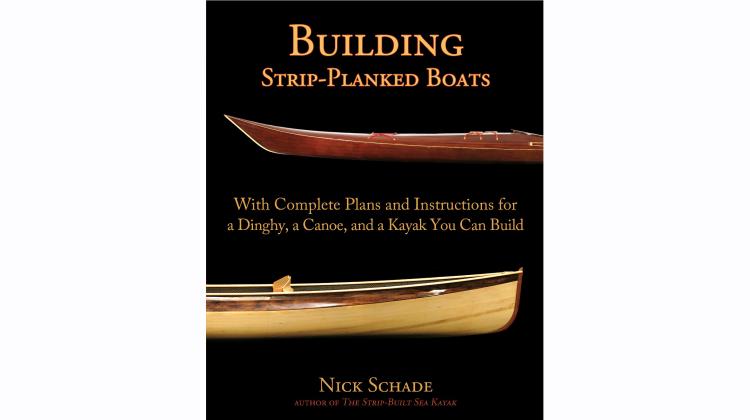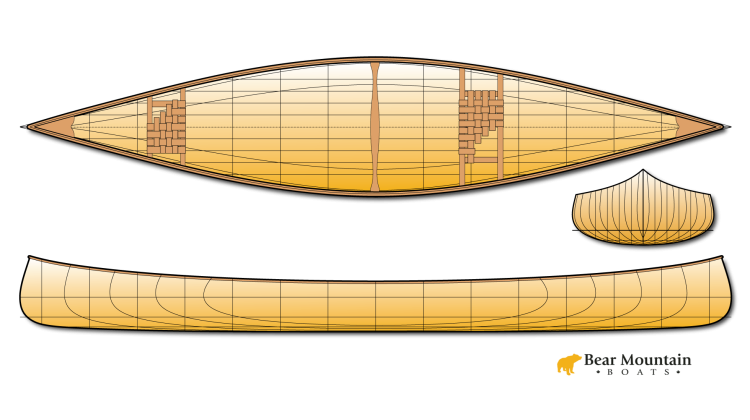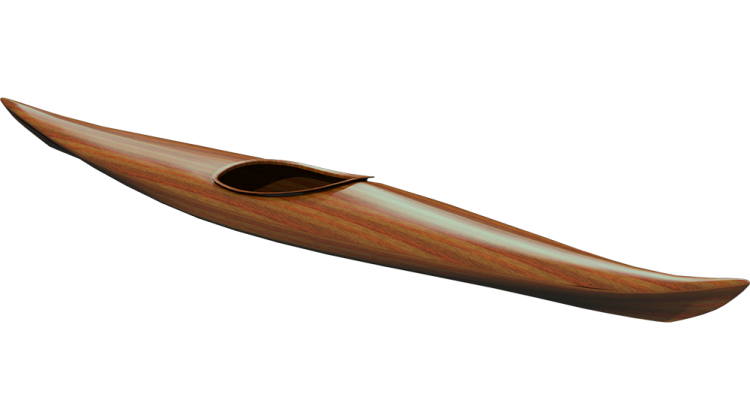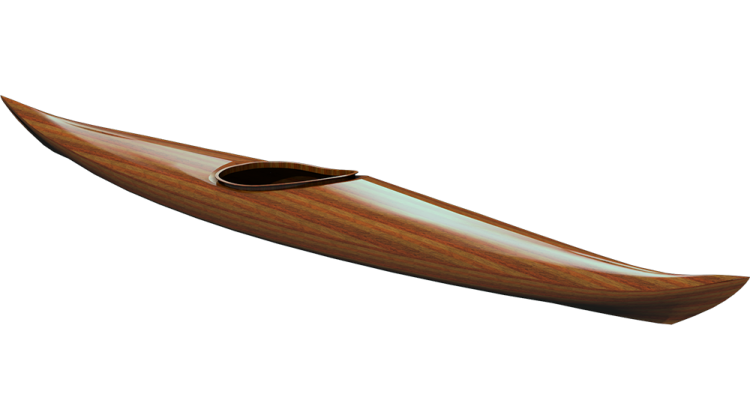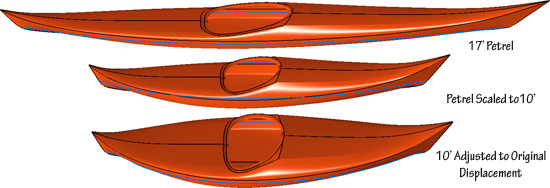
"Can I make a 10' kayak from a 17' kayak by decreasing the form spacing." or similar, is one of my more commonly received questions. The reason for asking may be that the questioner only has a 12' long work shop, or they don't want to put a longer kayak on their Mini Cooper or they just don't want a long boat.
The next question, is often "Will it change the performance?" Lets address this second question first because it is easy. The answer is an emphatic "Yes". Changing a design will change performance. Any design is a sum of factors including length, width, height, and other more esoteric parameters. But those esoteric parameters are all intimately related to the basic dimensions. Changing the dimensions changes the design and changes the performance. How much the performance changes depends on how much the dimensions change. Minor changes of a few percent will have a relatively minor changes in performance.
Changing from 17' to 14' or shorter constitutes a large change. The result would be a very different kayak. It might be a good kayak, but it isn't the same.
Now lets get back to the first question: "Can I make a ..." The short answer is, yes you can. It is very easy to adjust the length of a strip-built design by scaling the spacing between the forms. I have an appendix in my first book "The Strip-Built Sea Kayak" about doing exactly that. There are lots of reasons you might want to, such as shop space, building for a child, you have a different use in mind, etc. The reasons to do it are unlimited. But doing so changes the design.
I often get asked why short kayaks are wider. The reason was discovered by Aristotle thousands of years ago. To float an object you need to displace a volume of water that weighs the same amount as the weight you wish to float. Kayaks and boats are really just volumes of air that are big enough to float you.
If you make the design shorter, you reduce the volume. In the illustration above the blue lines indicates the waterline with about 250 lbs sitting in the kayaks. Note in the middle boat that the blue line crosses above the sheer line. The boat needs to sit very low in the water to displace enough to float to make up the volume lost by making it shorter. Going from 17 feet to 10 feet is a loss of over 40% of the volume that is compensated by sinking the boat deeper.
The easiest way to make up the lower volume of a short boat is to increase the width. If I add 40% to the width of the 10 foot kayak, I end up with a 34 inch wide boat as shown at the bottom of the illustration. Note that the blue waterliine is right back where it was in the 17' version.
Skinny boats look more graceful than wide boats and people seem to like the looks of narrow boats, but the principles of physics don't care. Stability is also defined by the distribution of width. A short narrow boat will be less stable than a long kayak of the same width. So, when you make a boat shorter, you are making it less stable. Adjusting by making it wider, compensates for the loss of stability as well as the volume.
There may be times when you are seeking a lower volume boat. Such as creating a kayak for a child. In this case it may be quite legitimate to scale down the length. Since children weigh less, you don't need the volume, and since they are shorter, a little loss in stability overall may still be plenty stable enough. There are also ways to adjust the spacing that help compensate for the shorter length without making them much wider. The 14' Great Auk used the formula in The Strip Built Sea Kayak appendix to scale down the Great Auk from 17'.
A design like the Petrel is intended for paddlers around 180 lbs plus or minus 30 or 40 pounds. If you weigh less than that or at the low end of the scale, you may desire a smaller boat. In this case you may be better off scaling the design in 3 dimensions. When you do this the volume is reduced in all dimensions. So, for example if you scale each dimension by 94% you will get a volume change of 0.94 x 0.94 x 0.94 = .88 or 88% which scales the 180 down to 160 lbs. This scaling of 6% is a small change. While the performance of the boat will be effected, it should make a boat that performs much like the original design, but for a smaller paddler. The same process can be used to make larger boats for larger paddlers. The Guillemot "S" and Guillemot "L" are examples of kayaks scaled down and up respectively.
While there are lots of reasons you may want to scale a design, chances are there is another solution. There are lots of existing kayak designs available. Odds are pretty good that the characteristics you desire in a kayak are already out there in a nice design, expressly created to perform the way you want. It is probably easier to just select that design instead of attempting to cobble together your own by modifying something else and risk unexpected results.
For more information about scaling designs, please see page 182 in The Strip-Built Sea Kayak.

